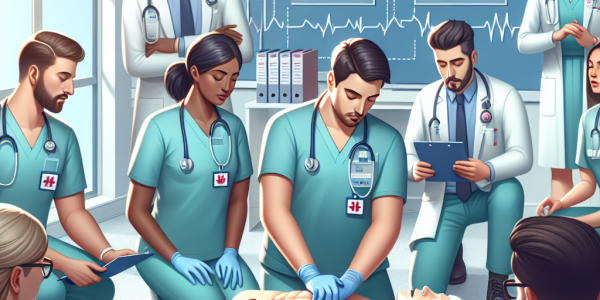Understanding BLS: A Comprehensive Guide for Healthcare Professionals
As a healthcare professional, you’re likely familiar with the term Basic Life Support (BLS). But do you fully understand what it entails and why it’s so crucial in the medical field? This comprehensive guide will delve into the importance of BLS, its key components, and how obtaining a BLS certification can enhance your career in healthcare.
What is Basic Life Support (BLS)?
According to the Mayo Clinic, Basic Life Support (BLS) refers to the type of care that first-responders, healthcare providers, and public safety professionals provide to anyone who is experiencing cardiac arrest, respiratory distress, or an obstructed airway. It encompasses everything from cardiopulmonary resuscitation (CPR) to the use of automated external defibrillators (AEDs).
Why is BLS Important?
The Centers for Disease Control and Prevention (CDC) reports that approximately 475,000 Americans die from cardiac arrest each year. BLS can be the difference between life and death in these situations. It’s the first line of defense against cardiac arrest, and it can maintain life until paramedics or other medical professionals arrive.
Key Components of BLS
There are several key components to BLS that healthcare professionals should be familiar with. These include:
- Scene Safety: Before administering BLS, it’s crucial to ensure the scene is safe. This includes checking for hazards such as traffic, fire, or dangerous gases.
- Early CPR: The National Institutes of Health states that early CPR with chest compressions can greatly increase survival rates.
- Defibrillation: Early defibrillation is another critical component of BLS. AEDs can be used to restore a regular heartbeat.
- Advanced Life Support: Once the basic measures have been taken, advanced life support (ALS) can be administered by trained medical professionals.
Obtaining a BLS Certification
As a healthcare professional, obtaining a BLS certification is not only beneficial, but often required. The Occupational Safety and Health Administration (OSHA) mandates that certain healthcare professionals must be BLS certified. This includes nurses, doctors, and paramedics, among others.
Getting certified in BLS involves learning the above components, as well as how to work as a team during a resuscitation effort. It also involves passing a written exam and demonstrating your skills in a hands-on test. Fortunately, obtaining a BLS certification has been made easier with online courses such as those offered by American Health Training.
Conclusion
Understanding BLS is crucial for any healthcare professional. It’s a fundamental skill that can save lives in emergency situations. By obtaining a BLS certification, you’re not only improving your skill set, but also increasing your value as a healthcare provider. Remember, in the world of healthcare, knowledge is power, and the more you know, the more lives you can save.


